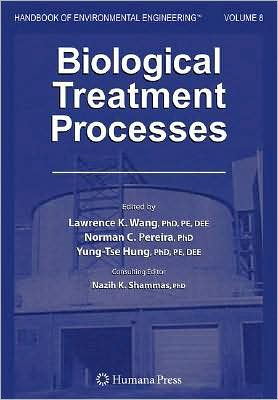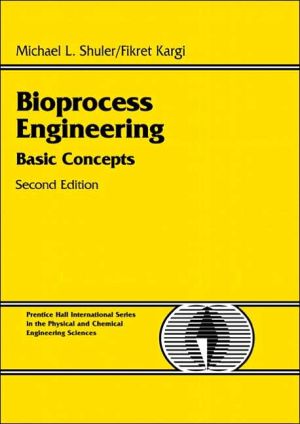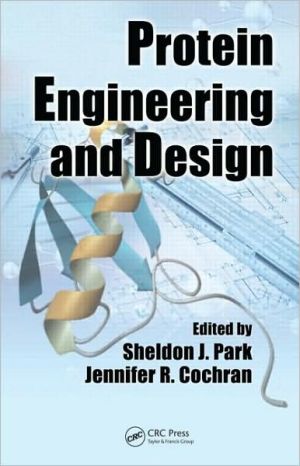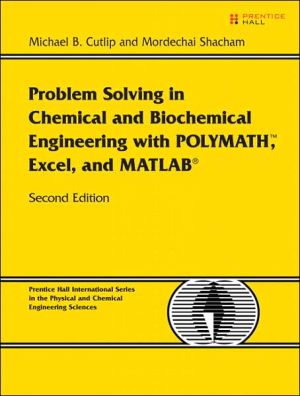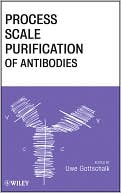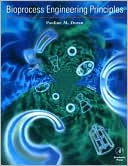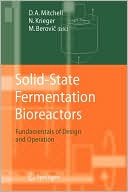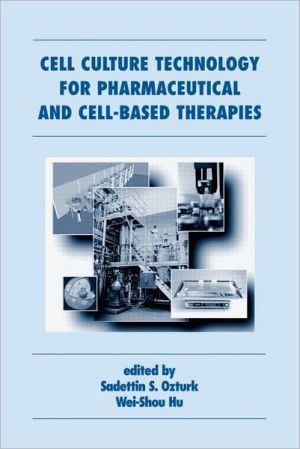Biological Treatment Processes: Volume 8
Pollution and its effects on the environment have emerged as critical areas of research within the past 30 years. The Handbook of Environmental Engineering is a collection of methodologies that study the effects of pollution and waste in their three basic forms: gas, solid, and liquid. In Volume 8, Biological Treatment Processes, tried-and-true solutions comprise a “methodology of pollution control”. The distinguished panel of authors contributes detailed chapters, which include topics...
Search in google:
Pollution and its effects on the environment have emerged as critical areas of research within the past 30 years. The Handbook of Environmental Engineering is a collection of methodologies that study the effects of pollution and waste in their three basic forms: gas, solid, and liquid. In Volume 8, Biological Treatment Processes, tried-and-true solutions comprise a “methodology of pollution control”. The distinguished panel of authors contributes detailed chapters, which include topics ranging from treatment by land application, activated sludge processes, and submerged aeration to trickling filters, lagoons, rotating biological contactors, sequencing batch reactors, digestions, and composting. Volume 8 and its sister book - Volume 9: Advanced Biological Treatment Processes – are designed as both basic biological waste treatment textbooks and reference books for advanced undergraduate and graduate students – as well as for designers of waste treatment systems, scientists, and researchers. An indispensable addition to the Humana Press series, Volume 8: Biological Treatment Processes provides an illuminating look at water pollution control and the fascinating evolution of bio-environmental engineering.
Chapter 1. BIOSCIENCE CONCEPTS FOR ENVIRONMENTAL CONTROL\ Mary Lou Bungay and Henry R. Bungay\ Chapter 2. TREATMENT BY APPLICATION ONTO LAND\ Donald B. Aulenbach and Nicholas L. Clesceri\ Chapter 3. TREATMENT BY SUBSURFACE APPLICATION\ Nicholas L. Clesceri, Donald B. Aulenbach and James F. Roetzer\ Chapter 4. SUBMERGED AERATION\ Jerry Tariscka,, Jerry Y. C. Hung, J. PaulChen, Yung-Tse Hung, and Shuai-Wen Zou\ Chapter 5. SURFACE AND SPRAY AERATION\ Jerry Tariscka, J. Paul Chen , Yung-Tse Hung, Lawrence K. Wang, and Shuai-Wen Zou\ Chapter 6. ACTIVATED SLUDGE PROCESSES\ Lawrence K. Wang, and Zucheng Wu\ Chapter 7. WASTE STABILIZATION PONDS AND LAGOONS\ Lawrence K. Wang and Zucheng Wu\ Chapter 8. TRICKLING FILTERS\ Lawrence K. Wang, and Zucheng Wu\ Chapter 9. ROTATING BIOLOGICAL CONTACTORS\ Lawrence K. Wang and Zucheng Wu\ Chapter 10. SEQUENCING BATCH REACTORS\ Lawrence K. Wang and Yang Li\ Chapter 11. OXIDATION DITCH\ Nazih K. Shammas and Lawrence K. Wang\ Chapter 12. COLUMN BIOREACTOR CLARIFIER PROCESSES\ Anatoliy I. Sverdlikov, Gennadij P. Shcherbina, Michail M. Zemljak, Alexander A. Sverdlikov, Donald H. Haycock, Andrew Lugowski, George Nakhla, Lawrence K. Wang, Yung-Tse Hung\ Chapter 13. UPFLOW SLUDGE BLANKET FILTRATION\ Svatopluk Mackrle, Vladimír Mackrle and Oldflich Draãka\ Chapter 14. BIOLOGICAL NITRIFICATION AND DENITRIFICATION PROCESSES\ Yu Liu, J. H. Tay, Y. M. Lin and Yung-Tse Hung\ Chapter 15. ANAEROBIC DIGESTION\ Jerry R. Taricska,David A. Long, J. Paul Chen,Yung-Tse Hung and Shuai-Wen Zou\ Chapter 16. AEROBIC DIGESTION\ Nazih K. Shammas and Lawrence K. Wang\ Chapter 17. Gas Phase Biofiltration\ Gregory T. Kleinheinz and Phillip C. Wright
